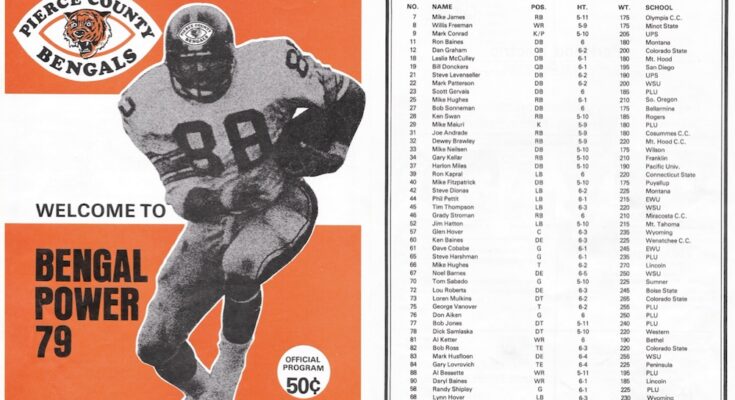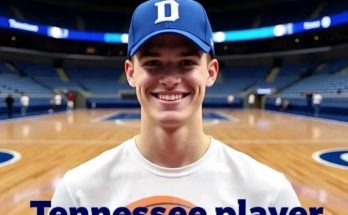WISHBONE: The Grit, Glory, and Legacy of an Offensive Revolutio
In the annals of football history, few innovations have left a mark as indelible as the Wishbone offense. Born out of necessity, perfected through grit, and celebrated for its sheer dominance, the Wishbone forever changed how the game was played. This is the story of a formation that defined an era — the grit, the glory, and the legacy of the Wishbone.
It was the late 1960s, and college football was on the cusp of transformation. Defenses were growing tougher, faster, more disciplined. Coaches were desperate for new ways to create offense, to move the ball, to win games.
Enter Emory Bellard, a young offensive coordinator at the University of Texas. Bellard had a vision: a formation that could capitalize on speed, deception, and the all-around athleticism of his quarterback and running backs.
The Wishbone took its name from the three backs lined up in a “Y” shape behind the quarterback, resembling the fork of a wishbone. It was a triple-option offense, designed to keep defenses guessing. The quarterback could hand off to the fullback running straight ahead, pitch the ball to one of two halfbacks sweeping around the edges, or keep the ball himself and run. The decision was made on the fly, reading defenders’ reactions in real time.
It was simple. Yet brilliant.
The first major test came in 1968, when Texas unveiled the Wishbone. They ran it with a punishing, relentless style — and opponents had no answer.
The success of the Wishbone wasn’t just about formation or philosophy. It was about the men who played it — their toughness, discipline, and adaptability.
At Texas, players like quarterback James Street and fullback Steve Worster became legends. Street was the quintessential Wishbone QB — smart, calm under pressure, with the ability to read defenses like a chess master. Worster was a bruising fullback, able to plow through defenses with raw power.
But it was a team effort. Offensive linemen like Bill Atessis and Dave Campbell fought in the trenches, knowing every block counted. The running backs needed to be versatile — quick enough to turn the corner, powerful enough to break tackles.
The Wishbone demanded more than skill. It demanded toughness — physical and mental.
One former player recalled, “You had to trust each other. The pitch, the handoff, the cutback — it all had to be perfect. If you hesitated, the whole play died.”
This grit was on full display in the 1969 season, when Texas ran the Wishbone to an undefeated national championship. The Longhorns’ dominance wasn’t just in yards or points — it was in the will to win, the relentless pursuit of every yard.
The Wishbone’s rise coincided with Texas’s rise as a college football powerhouse. But it wasn’t just the Longhorns who found glory with the offense.
In the 1970s, teams across the country adopted and adapted the Wishbone — from Oklahoma to Alabama, Arkansas to Notre Dame.
Oklahoma, under coach Barry Switzer, took the Wishbone to new heights. With a stable of running backs like Greg Pruitt and Joe Washington, and a relentless offensive line, the Sooners used the Wishbone to dominate the Big Eight and win multiple national titles.
Alabama’s legendary coach Bear Bryant also embraced the Wishbone in the late ’70s. With his own brand of hard-nosed football, Bryant’s Tide became a dominant force in the SEC, capturing championships and cementing the Wishbone’s place in football lore.
The offense’s glory was not just in championships, but in the spectacle it created. Long, punishing drives that chewed up clock and punished defenses. Back-breaking runs that flipped momentum instantly. A style of play that thrilled fans and frustrated opponents.
The Wishbone was more than an offense — it was a winning culture.
While players and coaches brought the Wishbone to life, the true genius lay in its design — a tactical innovation that challenged everything defenses thought they knew.
Emory Bellard, often credited as the Wishbone’s creator, was a visionary. He took principles from existing option offenses but added layers of complexity and versatility.
The key was deception and decision-making. The quarterback’s option reads forced defenses into impossible choices. Should they commit to the fullback dive or prepare for the pitch? Should linebackers drop back or attack the line?
Defensive coordinators had to develop new strategies, and yet many struggled. The Wishbone was a chess match — one that favored the offense’s ability to react and adapt in real time.
Bellard’s innovation also inspired countless coaches. The offense’s success showed that with creativity and discipline, even smaller or less heralded programs could compete.
By the late 1980s and early 1990s, the Wishbone faced new challenges.
Defenses had caught up. Coaches developed faster linebackers, more sophisticated pass defenses, and new blitz packages designed to disrupt the triple option.
The rise of the passing game also changed college football’s landscape. Quarterbacks like Dan Marino and John Elway demonstrated the power of aerial attacks, and fans craved explosive plays through the air.
The Wishbone, with its run-heavy, grind-it-out style, began to fade from prominence.
Yet, even as major programs moved on, the Wishbone’s influence remained. Variations of the triple option persisted — at service academies like Navy and Air Force, at smaller schools, and in high school programs nationwide.
The legacy of the Wishbone is more than just statistics and championships. It’s a story about innovation, teamwork, and resilience.
Coaches today still study the Wishbone as a blueprint for option football. The offense’s principles echo in modern formations — the spread option, the read option, and even elements of the Wildcat.
The players who ran the Wishbone speak of its lasting impact on their lives — teaching them discipline, trust, and how to perform under pressure.
And for fans, the Wishbone remains a symbol of an era when football was about physicality, strategy, and heart.
[Cut to interview clips]
James Street, Former Texas QB:
“The Wishbone was more than a playbook. It was about reading the defense, making split-second decisions. You had to be in sync with your teammates. That’s what made it special.”
Barry Switzer, Former Oklahoma Coach:
“We weren’t just running plays, we were running a system that wore teams down mentally and physically. The Wishbone gave us an edge that others couldn’t match.”
Emory Bellard (archival footage):
“I wanted a formation that put pressure on defenses — that made them guess, made them hesitate. When you do that, you control the game.”
Today’s football may be faster and more pass-oriented, but the Wishbone’s DNA lives on.
The option football renaissance in recent years — from college teams running read options to NFL teams occasionally employing Wildcat formations — owes a debt to the Wishbone.
Coaches continue to admire its simplicity and effectiveness. And at the grassroots level, high school coaches introduce young players to the offense, passing the legacy forward.
The Wishbone was more than an offensive formation — it was a revolution. A testament to grit, creativity, and the pursuit of glory. It changed football forever.
As we look back on the legends who ran it, the coaches who built it, and the fans who cheered it, one thing is clear: the Wishbone will always hold a special place in the heart of the game.
[Closing montage]
Shots of vintage games, fans celebrating, coaches drawing up plays, kids running option drills.
Narrator (V.O.):
In the end, the Wishbone is a story of football at its rawest — the clash of wills, the art of deception, and the relentless quest to win. It’s the grit, glory, and legacy that define the game itself.
Would you like me to help turn this into a screenplay format or add specific player profiles, stats, or game highlights? Or perhaps a more dramatic narrative style?



